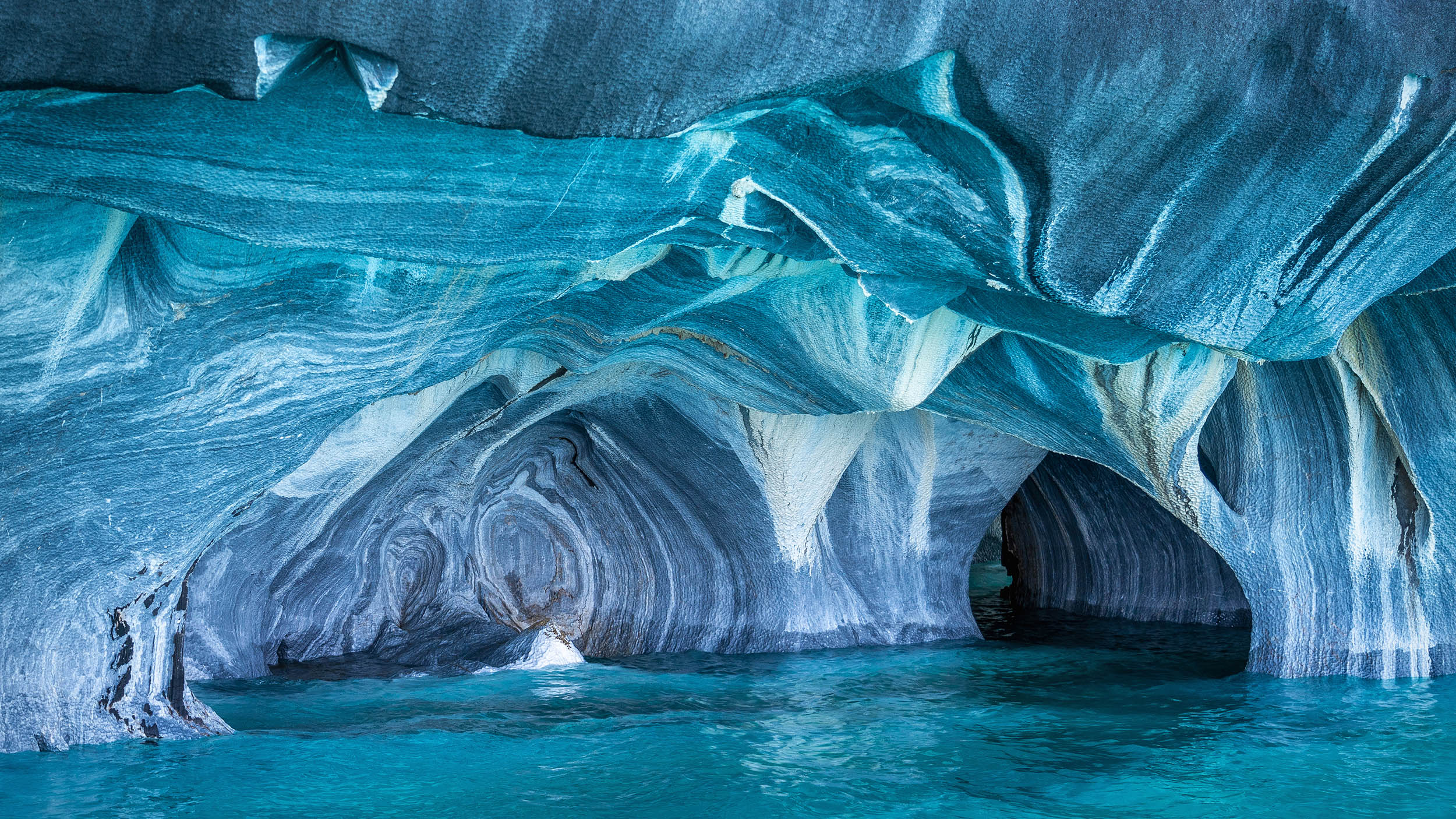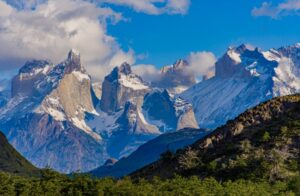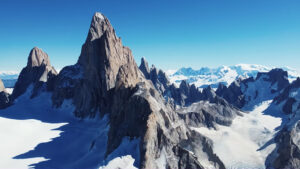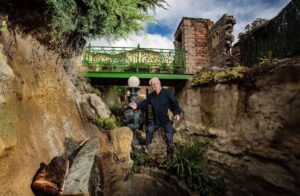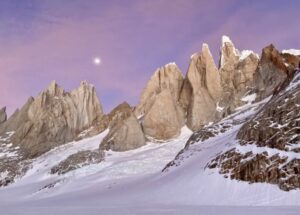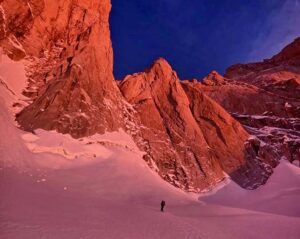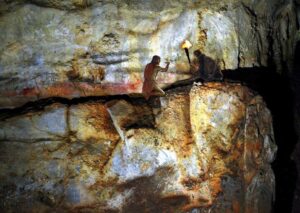On the border between Chile and Argentina, on the edges of a turquoise lake in the heart of Patagonia, one of the world’s most visually spectacular cave systems awaits.
Known variously as Capillas de Mármol, The Marble Chapel, or the Marble Caves, the caverns comprise smooth, striated marble that sit just above the waterline of the glacier-fed lake. When you combine the glossy surface of the marble with the light reflecting off the glacier silt in the water, you get a colorful show that, at first glance, seems more at home in a sci-fi movie than on good old planet Earth. Throw in vaults, columns, and chambers carved out by erosion, and you have a natural wonder for the ages.

Once the glaciers retreated, water carved out the Capillas de Mármol. Photo: Shutterstock
“They were formed at temperatures of around 300˚C to 400˚C, between 10 and 15km underground,” geologist Francisco Herve told the BBC.
The caverns started out as limestone before the planet’s intense heat and pressure transformed them into marble. The cake-like layers are the result of varying mineral compositions, with the whitest parts mostly made out of calcium carbonate.
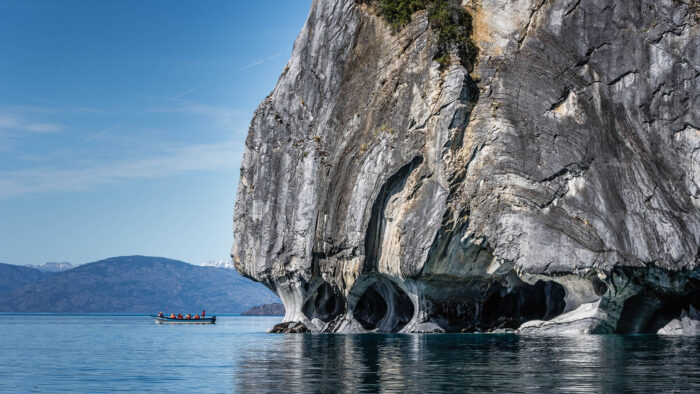
The caves’ composition makes them particularly susceptible to erosion. Photo: Shutterstock
Fast-acting erosion
“These calcareous rocks…are among the most soluble that exist,” Herve explained.
That means the erosion that formed the caves themselves probably happened quickly, shortly after the glaciers that carved Patagonia’s iconic landscape began to recede. That was probably about 10,000 to 15,000 years ago, the geologist said. And by “quickly,” we mean that relatively. Scientists estimate the process took about 6,000 years.
As for why glacial silt produces such a shocking blue-green color? An accident of physics. The pulverized dust that used to be mountains happens to absorb short-wavelength light (purples and indigos) while reflecting blues and greens.
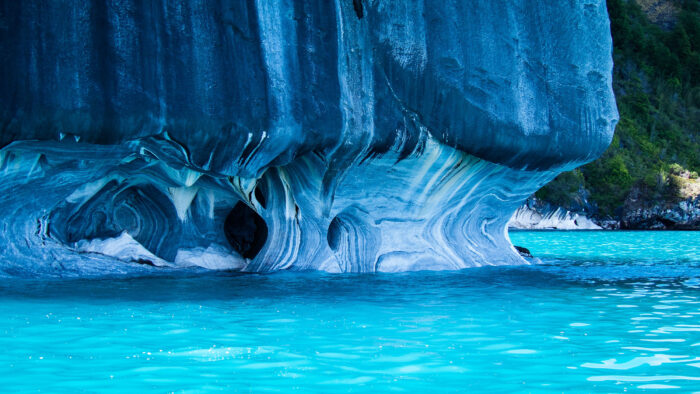
Heat and pressure gave the caves their patterns, but glacial silt delivers the color. Photo: Shutterstock
The Marble Caves are part of a larger cave group that dots the shores of Lago General Carrera. No one knows who “discovered” the caves — people have likely known about them since they developed. Humans have continuously inhabited that portion of Chile for over 12,000 years, meaning they would have gotten to watch the caves develop over hundreds of generations.
The whole area was designated a natural sanctuary in 1994 to help preserve it for future generations. But that doesn’t mean you can’t visit it.
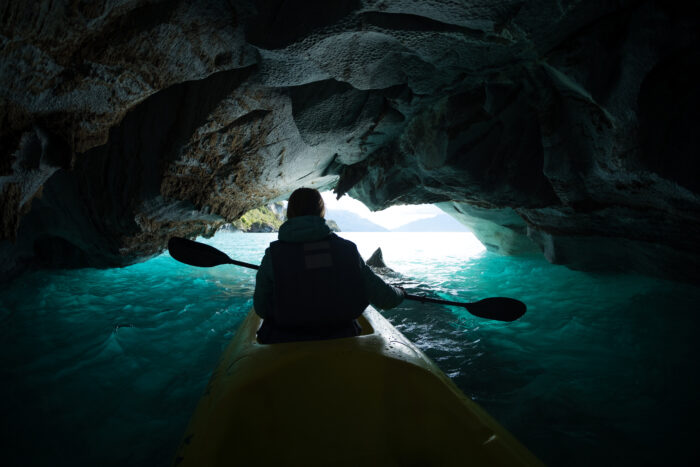
Boat is the only way to reach this natural wonder. Photo: Shutterstock
Tourism over ranching
Three decades ago, everyone in the area was involved in the cattle industry. Now a good chunk of the local population works in tourism. The Capillas de Mármol is only accessible by boat, and locals from the nearby hamlet of Puerto Río Tranquilo are on hand to facilitate trips. According to several travel websites, spring and fall are the best times to catch the caves at the perfect synthesis of water level and reflected light.
